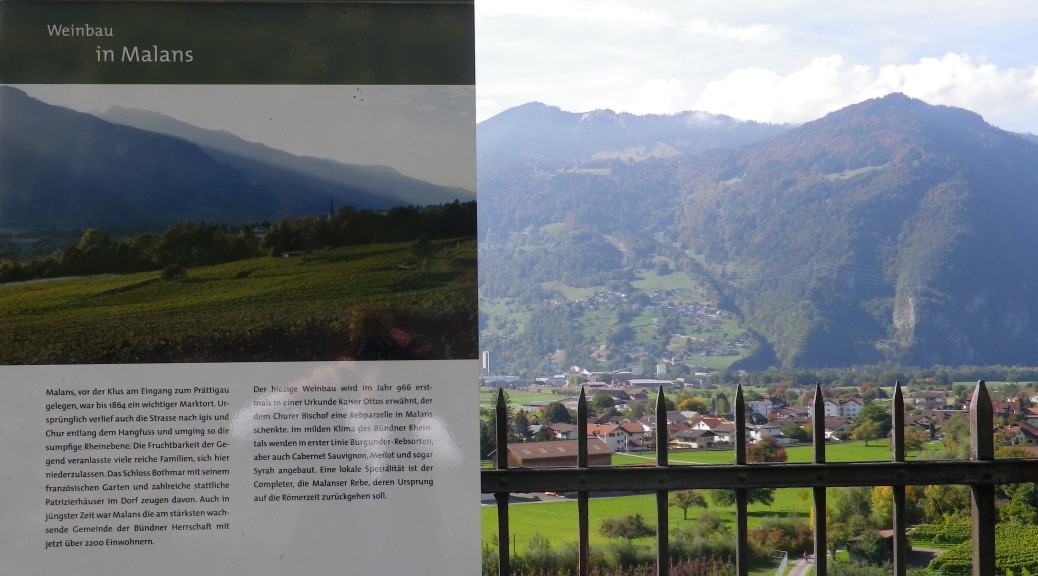What I Learned
The historical wine tradition in this area dates to at least 966, when the emperor gifted a vineyard in Malans to the nearby Bishop of Chur. But vines may have also been planted in earlier times.
The main varietal grown in this area is the Pinot Noir (known here as Blauburgunder). It has been grown here since the 17th century. From it is made not only the dark, traditional oak-aged Pinot Noir wine, but also new wine (called Federweiss here), roses, and Schiller wine. (Schiller wine is a mix of red and white grape juice, pressed at the same time, and blended before fermentation. It results in a rose-colored wine.) More recently, red varietals such as Cabernet Sauvignon, Syrah and Merlot have been grown here. The new-comers to the region are early-ripening Gamaret and Garanoir (Gamay and Reichensteiner crosses), and a small amount of Cabernet Jura.
Some white varietals are here as well. These include the other burgundies: Weissburgunder (Pinot Blanc), and Grauburgunder (Pinot Gris); Chardonnay, Gewuerztraminer, Kerner, Sauvignon Blanc, and Riesling-Silvaner (known as Mueller-Thurgau elsewhere). A local speciality was the Completer grape, found here as long as there have been vines in the area. Now mostly wild, it is still sometimes harvested, and made into a full-bodied and very aromatic wine, or added to a blend.
What I Tasted
2014 Blauburgunder, Malanser, AOC Graubuenden, Von Salis: a dry red wine with light ruby red color; fruity nose, and red fruit flavors; mild tannins.
2014 Riesling-Silvaner, Maienfelder, AOC Graubuenden, Lampert’s: a dry white wine with pale gold color; floral and mineral nose; floral and white stone fruit flavors; high acidity.
2014 Gewuerztraminer, Maienfelder, AOC Graubuenden, Weinbau Nigg: a dry white wine with pale gold color; floral nose; floral and vanilla flavors; very mild acidity.
